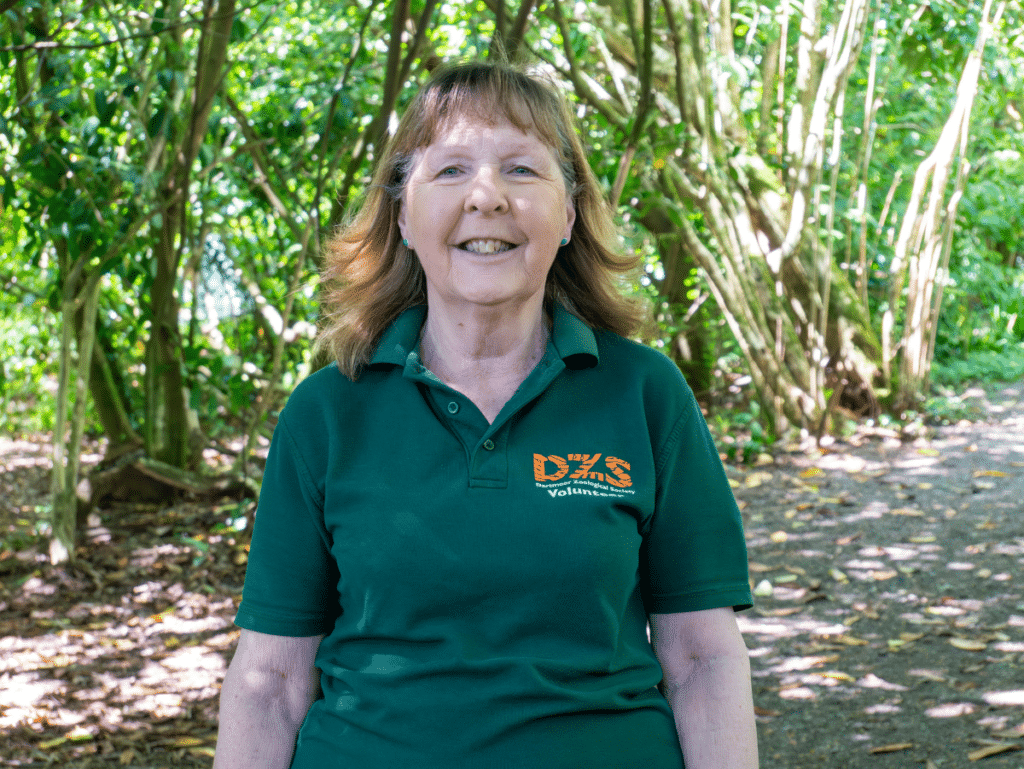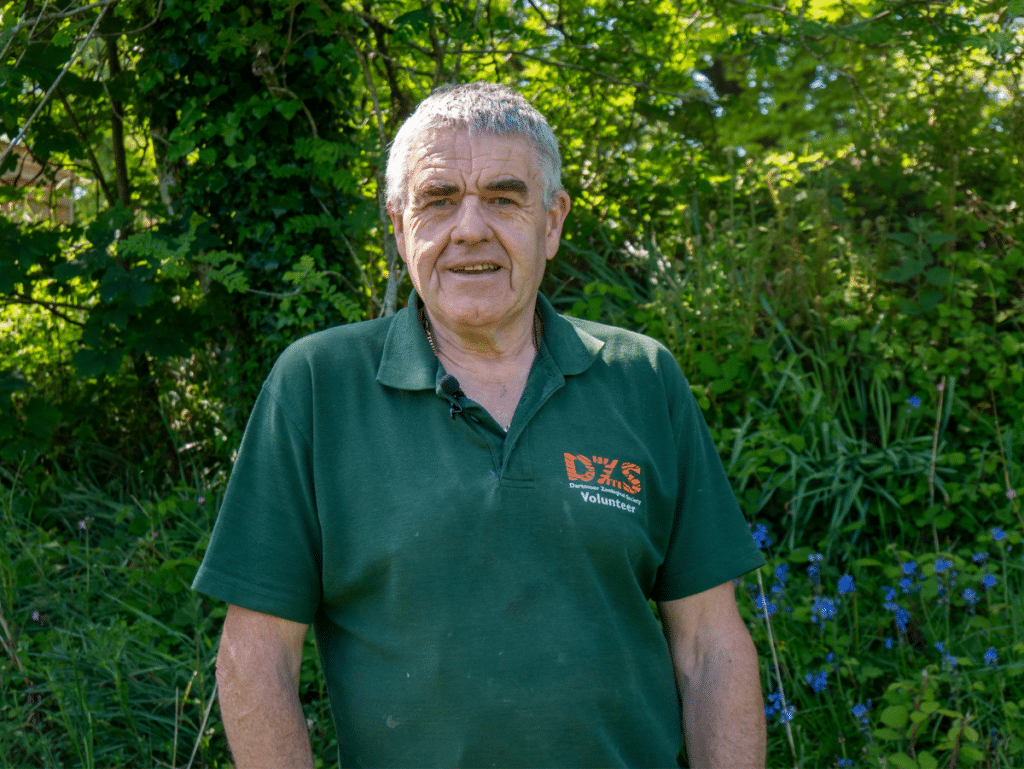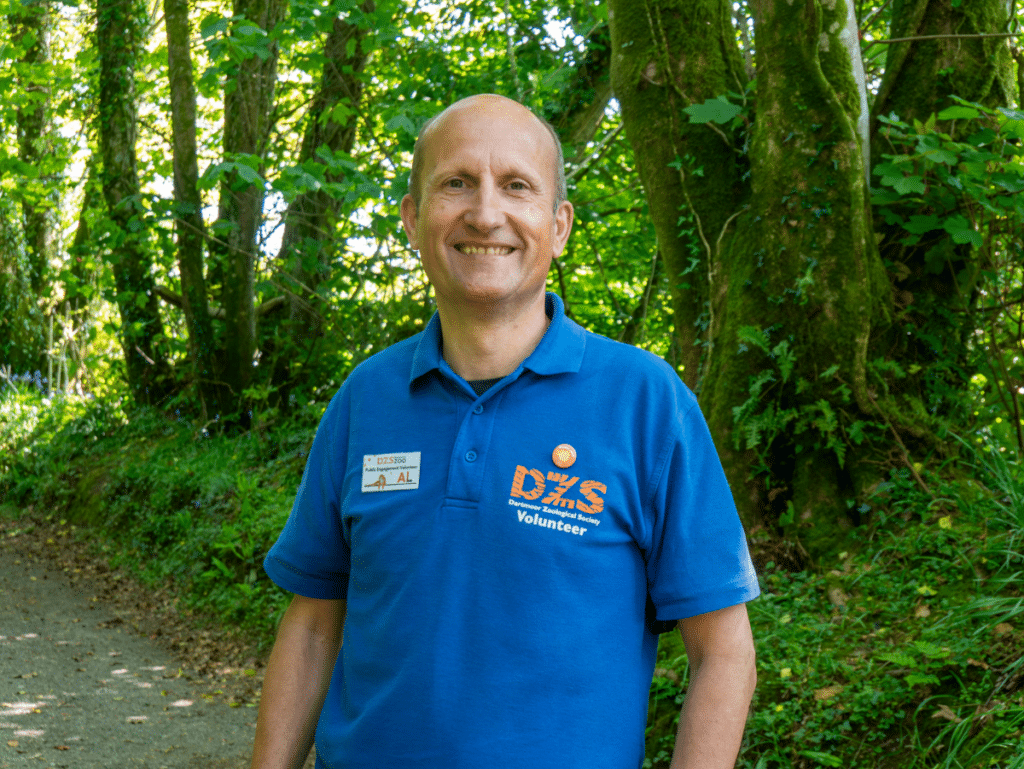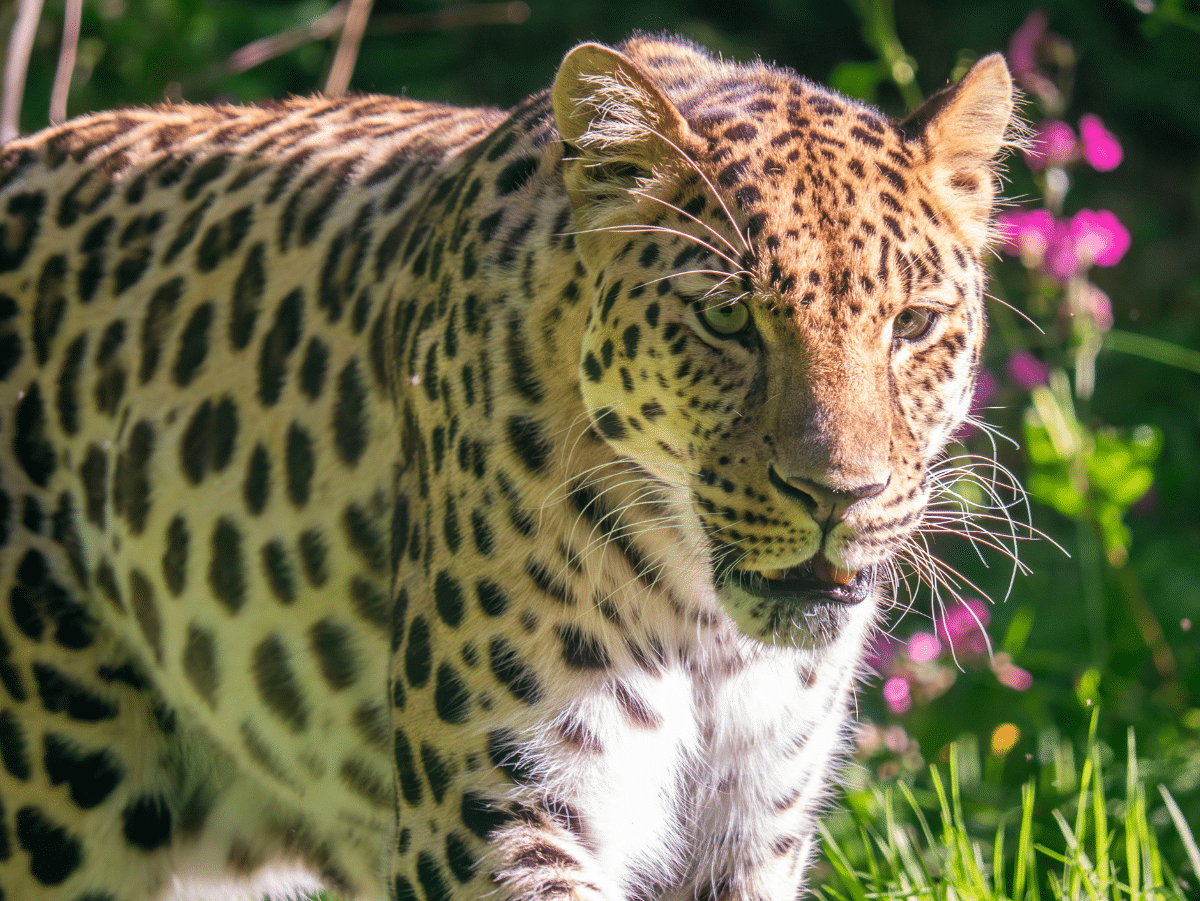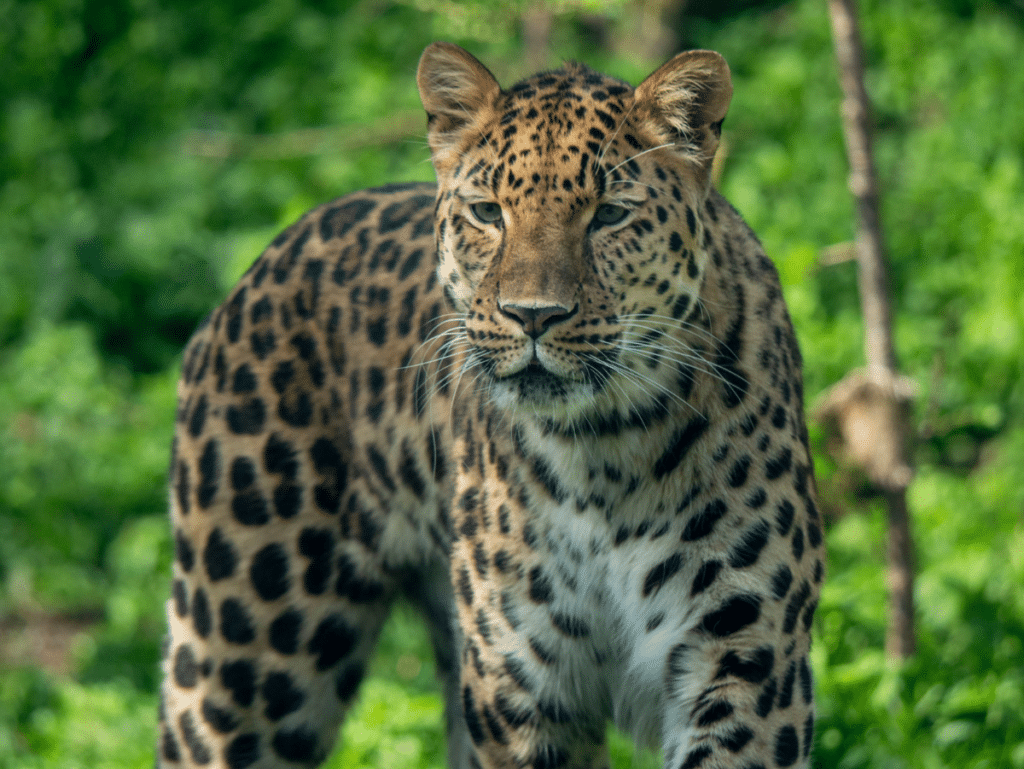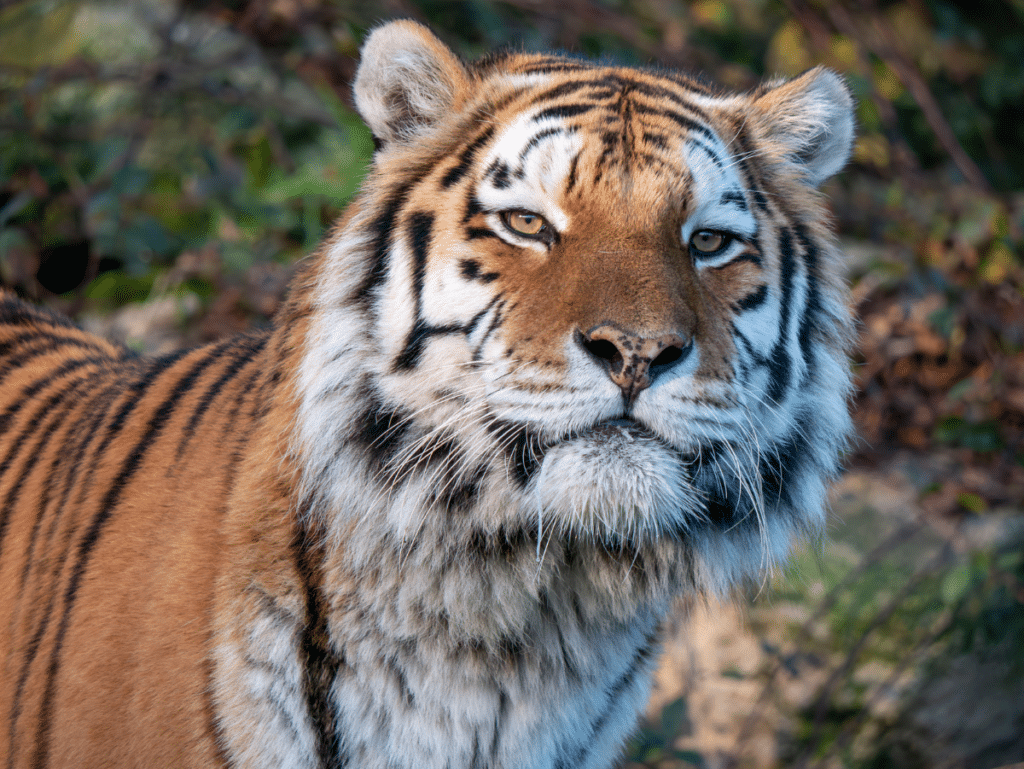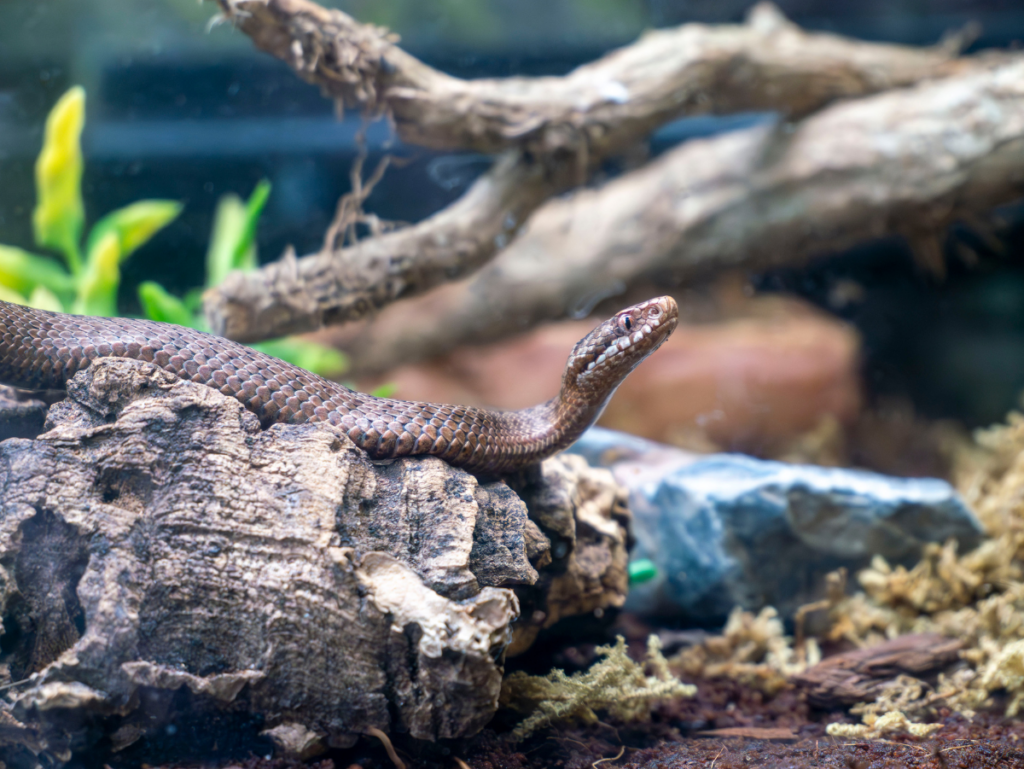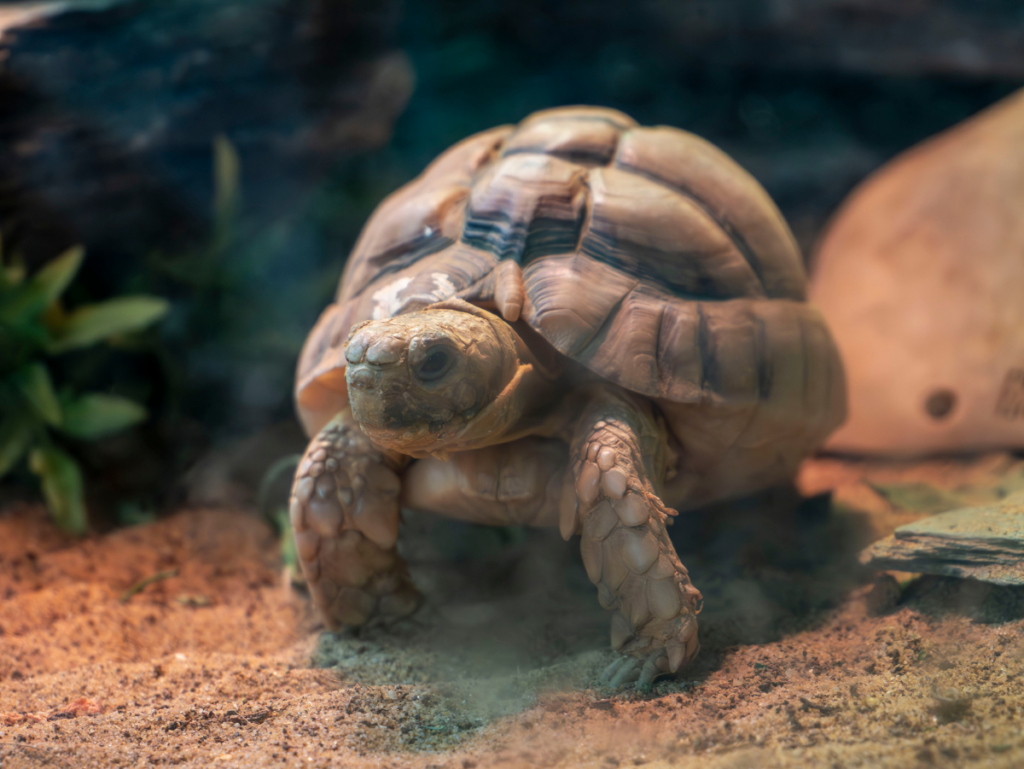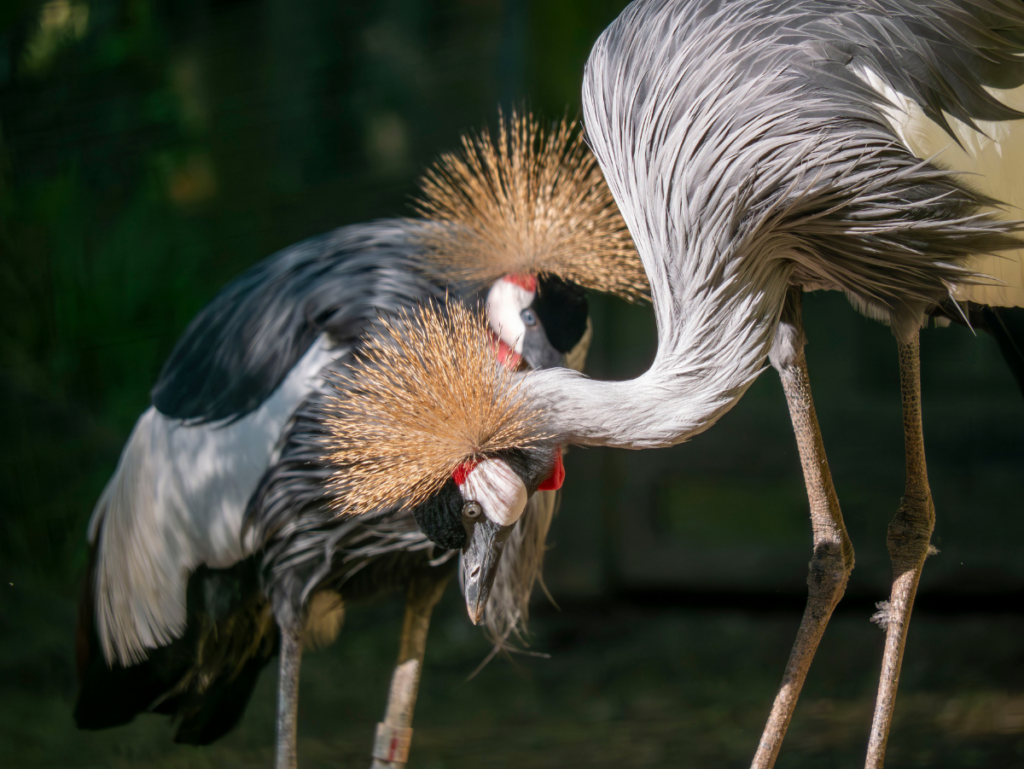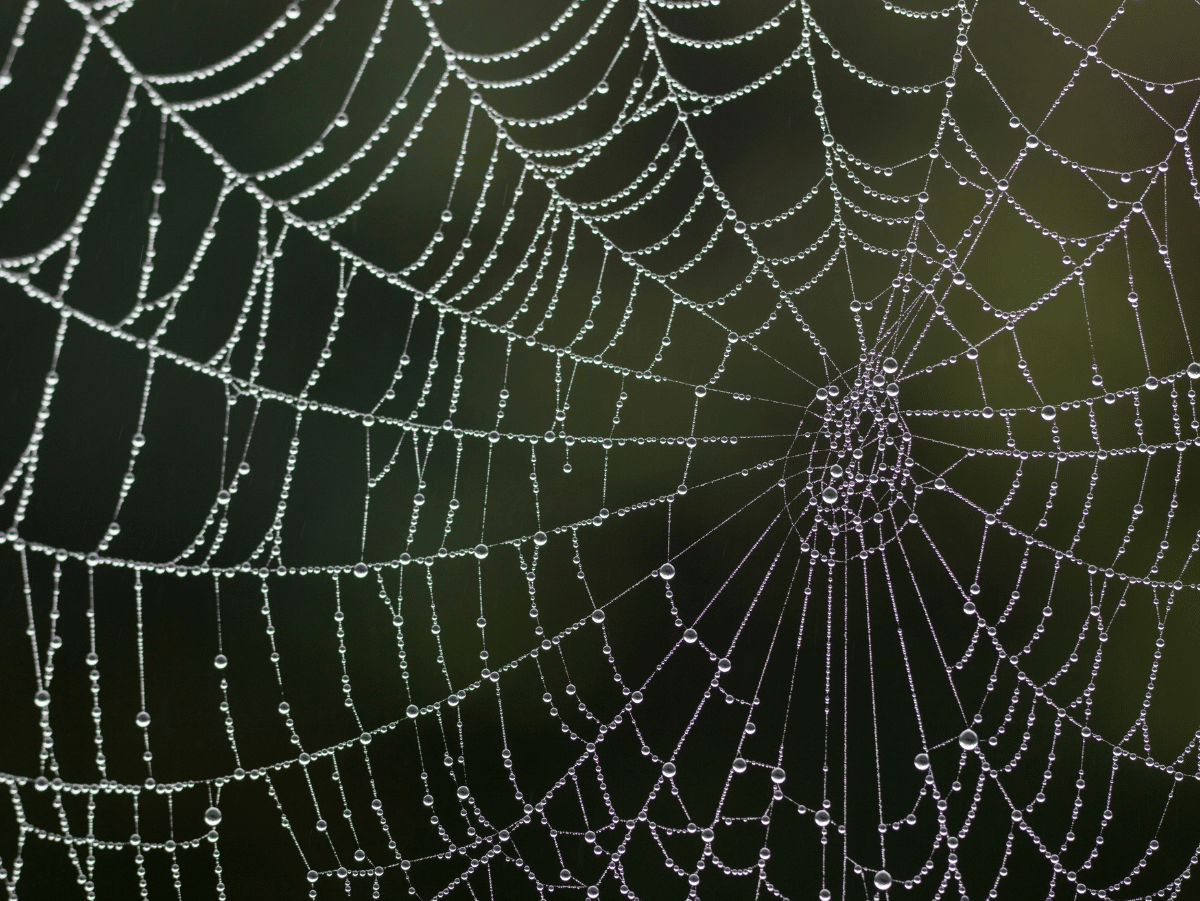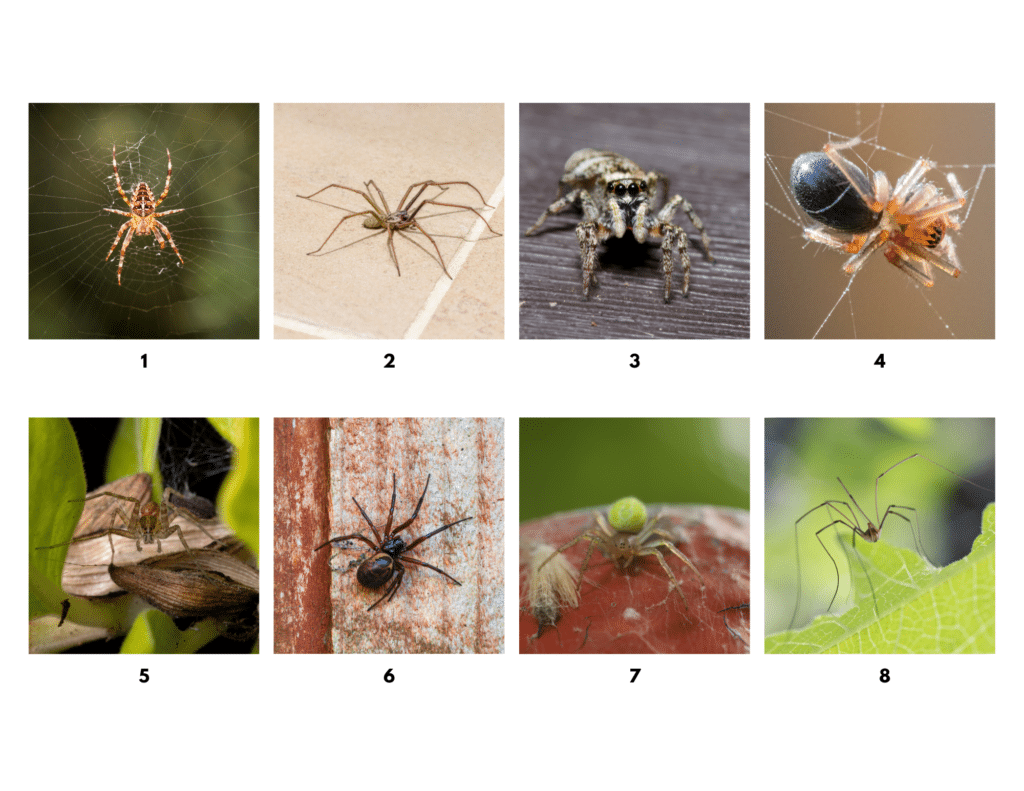World Snake Day is a day to celebrate and learn about one of the planets most misunderstood animals. Snakes often get a bad reputation, many people fear them or think they’re dangerous, but the truth is, they play a vital role in our ecosystems and deserve more respect than fear.
There are over 3,500 species of snake around the world, but only about 600 are venomous, and fewer than 200 pose a serious threat to humans. That means most snakes you will ever meet (or see) are harmless and far more afraid of you than you are of them.
Why are snakes important?
Snakes play a vital role in maintaining ecological balance. As natural predators, they help regulate populations of rodents, insects, and other small animals. By keeping these populations in check, snakes prevent crop damage and reduce the spread of diseases. Rodents, for example, often carry ticks that transmit illnesses like Lyme disease. Fewer rodents mean fewer ticks and a lower risk of disease for both humans and wildlife. This makes snakes an effective, natural form of pest control that benefits both the environment and public health.
Beyond pest control, snakes contribute to the overall health of their ecosystems. They support nutrient cycling by aiding in the breakdown of organic matter and play a role in seed dispersal through their interactions with prey. These functions help maintain healthy soil and plant life, promoting biodiversity. Although often misunderstood, snakes are essential allies in preserving the stability and resilience of the natural world.
5 Fun Facts about Snakes!
- The King Cobra is the largest venomous snake in the world. They can grow as long as 5.5 meters.
- Not all snakes lay eggs; some give birth to live young.
- Snakes don’t have eyelids! Instead, they have a special scale to protect their eyes.
- They swallow their food whole because they can’t chew! Snakes have a very flexible lower jaw which allows them to eat animals who are 75% to 100% larger than their own head.
- The Reticulated Python holds the title of the longest snake, regularly reaching over 6.25 meters in length. The largest recorded was 10 meters long.
Snakes at Dartmoor Zoo
We’re proud to showcase two fascinating snake species in our Reptile and Bug House at Dartmoor Zoo. To celebrate World Snake Day, we’re taking a closer look at these incredible reptiles, sharing what makes them unique, their roles in nature, and why they deserve our respect and protection.
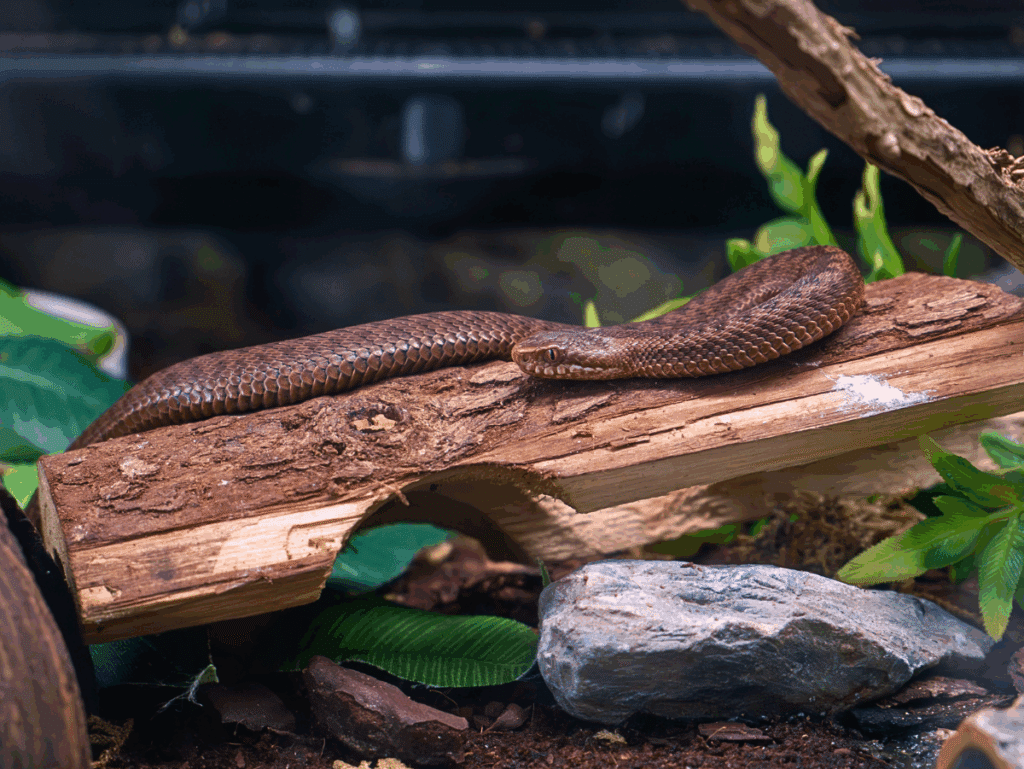
European Adder (Vipera berus)
The European adder is the UK’s only native venomous snake and one of just three snake species found here. Despite their reputation, adders are shy and non-aggressive, only biting in self-defence when threatened or disturbed. Most often seen basking on countryside paths or trails, they pose little risk to humans if left alone.
These snakes can grow up to 75cm in length and are recognised by the distinctive zigzag pattern along their back and the distinct V or X shaped mark on their head. They feed infrequently, only 6 to 10 times a year. Adders play an important role in controlling populations of small mammals and insects, helping to maintain a balanced ecosystem that supports agriculture and benefits human communities.
Adder populations in the UK are declining due to habitat loss and fragmentation caused by farming. Though legally protected, they need more awareness and support to survive.
At Dartmoor Zoo, we care for two young adders born in August 2023. By giving our visitors the chance to see and learn about them, we hope to shift public perception and inspire conservation efforts.
Adders Aren’t the Enemy
Adder bites to humans in the UK are extremely rare and almost never life-threatening, but they always require medical attention. Most bites occur when a snake is accidentally stepped on or disturbed. While healthy adults usually recover well with minimal treatment, children, older adults, and those with pre-existing health conditions may experience more severe reactions and should be treated as a priority.
Recently, people have been more worried about their dogs being bitten by adders. Curious by nature, dogs may sniff or step too close to a basking adder, triggering a defensive strike. Although the vast majority of dogs recover fully with prompt veterinary care, these incidents have led to more negative public perception of adders, despite their shy and non-aggressive nature.
If you think your dog has been bitten by an adder, look for swelling, most often around the face or leg, along with two small puncture wounds at the centre of the swelling. Your dog may show signs of pain or distress, such as limping, whining, or appearing unusually quiet or withdrawn. It’s important to keep your dog calm and as still as possible to slow the spread of venom, offer water if they’ll take it, and get them to the nearest veterinary clinic that stocks antivenom as quickly as possible.
How to Prevent Bites and Be Prepared:
- Attach an adder bell to your dog’s collar to alert wildlife.
- Stick to clear, open paths, especially during warm, sunny days.
- Keep your dog on a lead or under close supervision in areas where adders are known to live.
- Research and know the location of the nearest veterinary clinics that stock antivenom before heading out.
Remember adder bites are not acts of aggression, they are rare, instinctive reactions from a wild animal trying to stay safe. By understanding and respecting their place in nature, we can protect our pets and preserve one of Britain’s most remarkable native species.
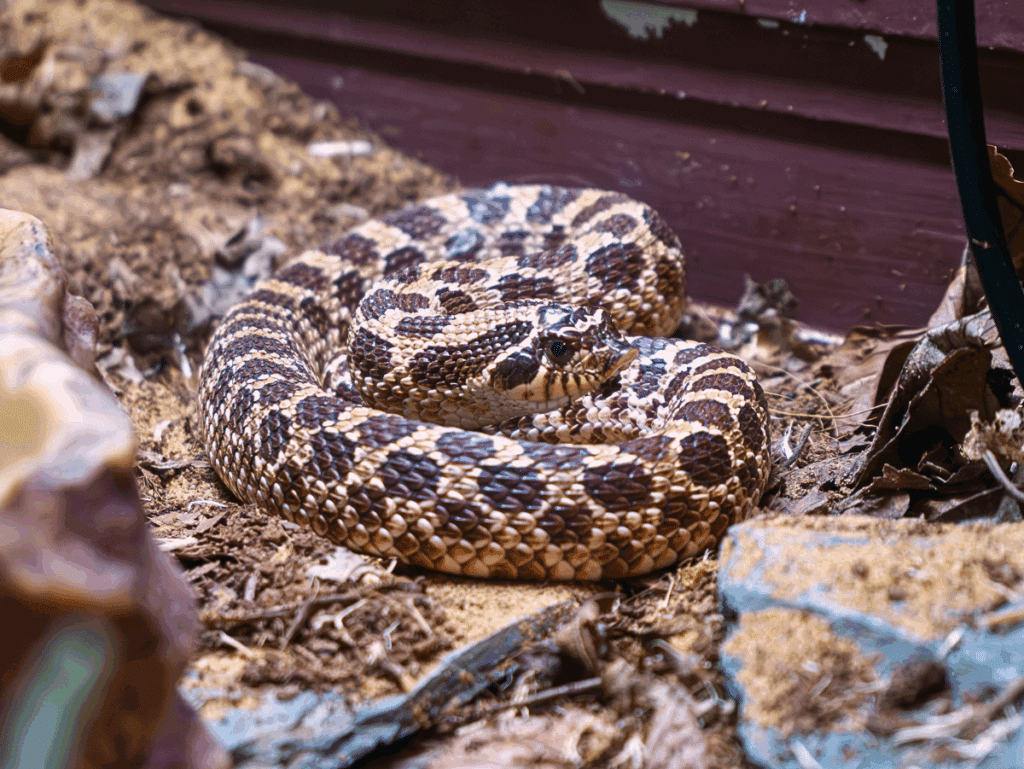
Western Hognose Snake (Heterodon nasicus)
The Western Hognose snake is a fascinating and often misunderstood species native to central North America, ranging from southern Canada down to northern Mexico. They thrive in open prairies, meadows, and floodplains, where their burrowing abilities come in handy. Their name comes from the distinctive upturned scale at the tip of their snout, which they use to dig through loose sand and soil. Hognose snakes often create burrows that may be shared with other snakes, helping them stay cool and hidden from predators. Beyond their burrowing habits, these snakes play an important role in controlling populations of toads and other amphibians, which can be pests or disease carriers.
They are mildly venomous, but not in the way you might expect. They produce a mildly toxic saliva that is harmless to humans but effective at subduing their prey. This saliva comes from a specialized gland called Duvernoy’s gland.
Western Hognose snakes have unique defence mechanisms. When threatened, they mimic rattlesnakes by flattening their necks and hissing loudly. If this bluff doesn’t work, they put on an elaborate display of playing death, flipping onto their backs, lolling out their tongues, and lying motionless until the danger passes.
While this species is classified as Least Concern and remains locally common across much of its range, certain populations are being threatened by habitat loss and human persecution.
At Dartmoor Zoo, we care for Django, our resident Western hognose snake, born in October 2013. With a lifespan of up to 20 years in captivity, Django serves as an ambassador for his species, helping to educate visitors about the fascinating behaviours and adaptations of this charming and often overlooked snake.
Snakes aren’t villains, they’re vital to our ecosystems.
From the shy European adder to the charismatic Western hognose, each species plays an important role in nature. World Snake Day is all about breaking the stigma, sharing facts, and raising awareness of these often-misunderstood reptiles. Whether as natural pest controllers, prey for other animals, or part of cultural heritage, snakes are fascinating and essential creatures that deserve our respect and understanding.
Come visit our Reptile and Bug House at Dartmoor Zoo and meet these amazing animals in person, you might just leave with a newfound appreciation for the stars of World Snake Day.
Sources:
https://www.animalfriends.co.uk/dog/dog-blog/the-hidden-dangers-of-summer/ | https://savethesnakes.org/why-snakes/ | Dartmoor Zoo Animal Pack | https://www.arguk.org/get-involved/news/adders-are-even-more-amazing | https://reptilesupershow.com/blog-title-8-incredible-hognose-snake-facts/ | https://www.allwindsdogfirstaid.co.uk/


